On the Road is a weekday feature spotlighting reader photo submissions.
From the exotic to the familiar, whether you’re traveling or in your own backyard, we would love to see the world through your eyes.
JanieM
This last China set features Red Stone Gorge, another Yulin “attraction.” The first four pictures were taken by one of Jamie’s fellow “foreign teachers,” a young man from the Netherlands who was in China teaching English. I’m including his shots because my camera battery died that day and I hadn’t brought a spare.
Thanks to Steve from Mendocino for editing the pictures, and YY_Sima Qian for showing up in the comments to add detail and a local perspective to the China I tried to capture.
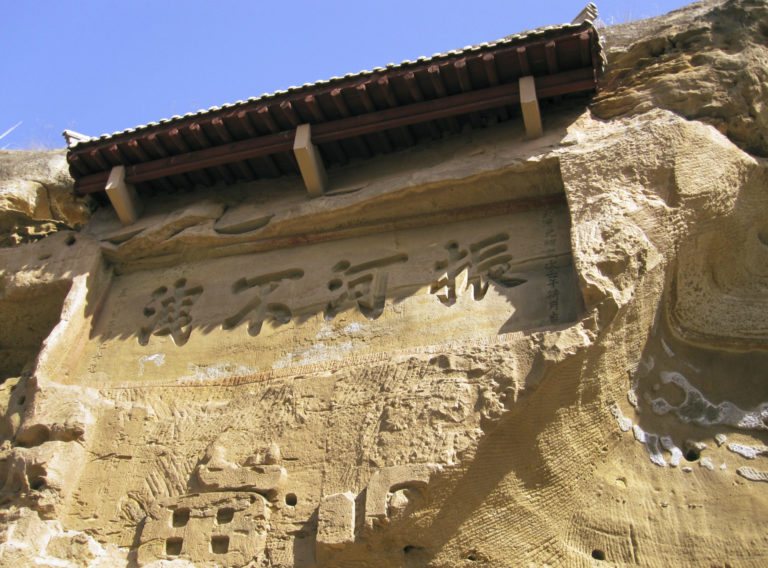
The gorge has a series of recesses carved into the walls, each with a mix of Buddhist statues and in some cases inscriptions. As with the pagoda in the previous set, I couldn’t get much of an explanation out of the local people for who built this place, or when.
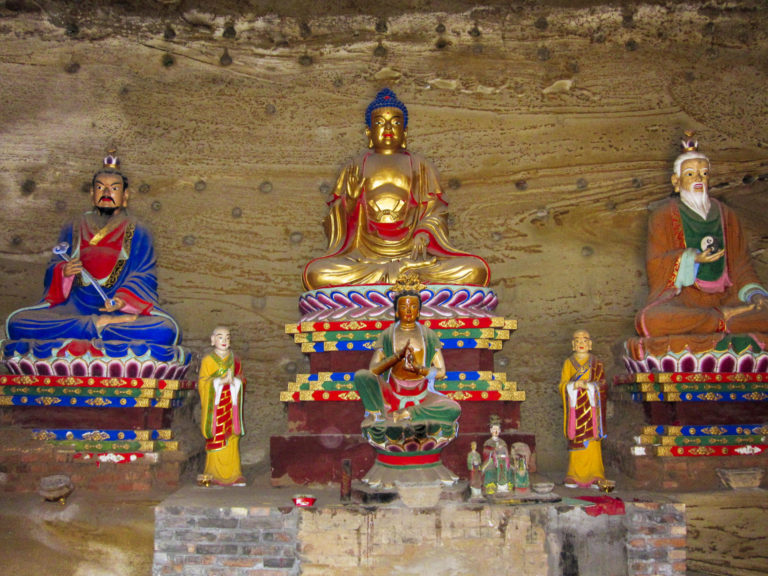
One of the more vivid recesses.
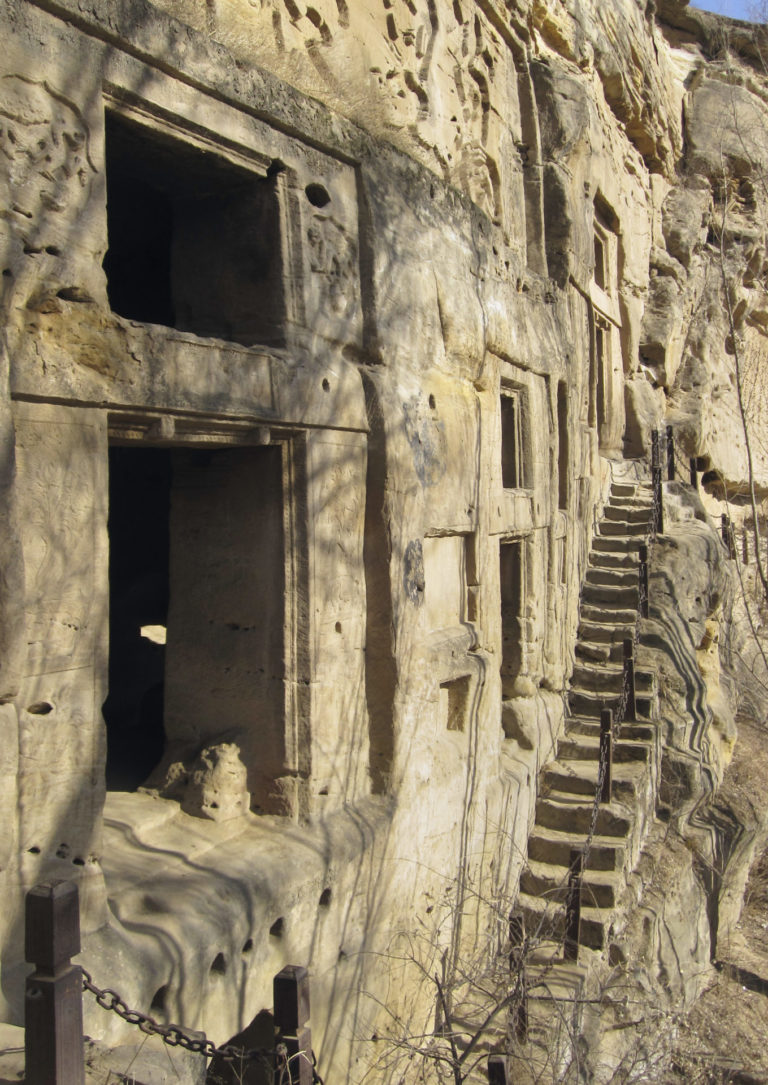
Steep! But at least there’s a chain to hang onto.
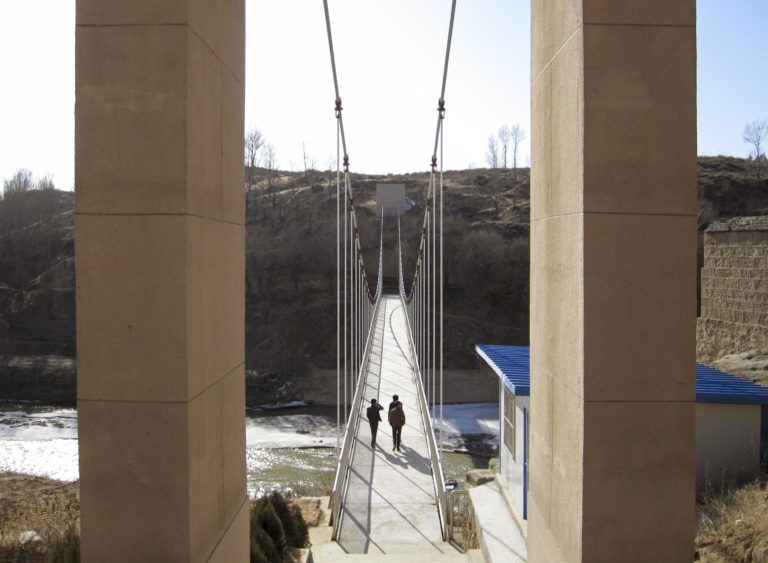
The bridge across the river that snaked through the gorge.

Cross-cultural manifestation were common, including a Hooter’s in Beijing (not pictured :-) )
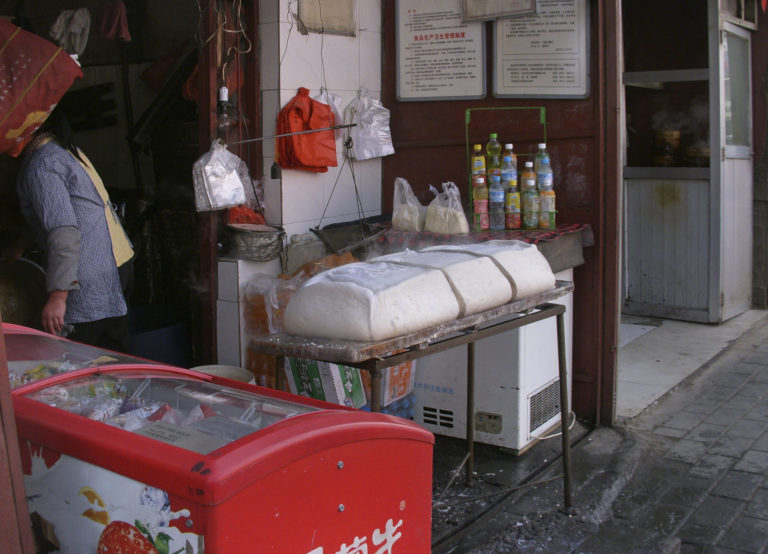
I wrote in an earlier post that I ate everything I was offered except chicken feet. But I had no idea what some of it was, and in particular there was occasionally a flavor in the food in Yulin that I wasn’t that fond of. Jamie and I thought it might be goat, mutton, or lamb, which I don’t eat at home, but his Mandarin vocabulary didn’t extent to distinguishing amongst them, if indeed there even is the same distinction as in English.
Late in my visit I discovered that the taste I didn’t particularly like was the local bean curd. As with everything else, the Yulin folks assured me that Yulin’s bean curd was the best in China, and therefore the best in the world. I came away privately unconvinced. And I’m kind of glad I didn’t see a lot of sights like this before I started eating out in China.
This was taken on my last day in Yulin.
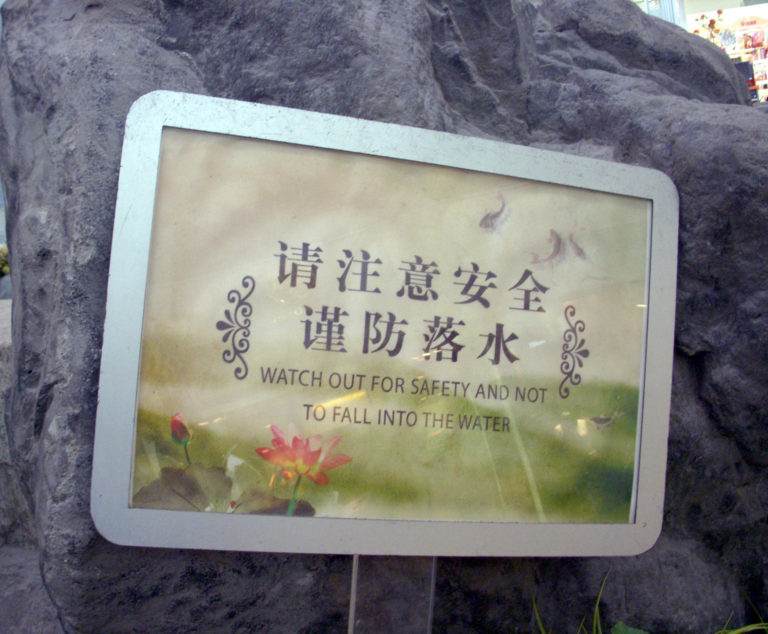
At the airport while I was waiting to board the flight home. I actually braved the flight to Beijing and an overnight in a hotel without my guide.
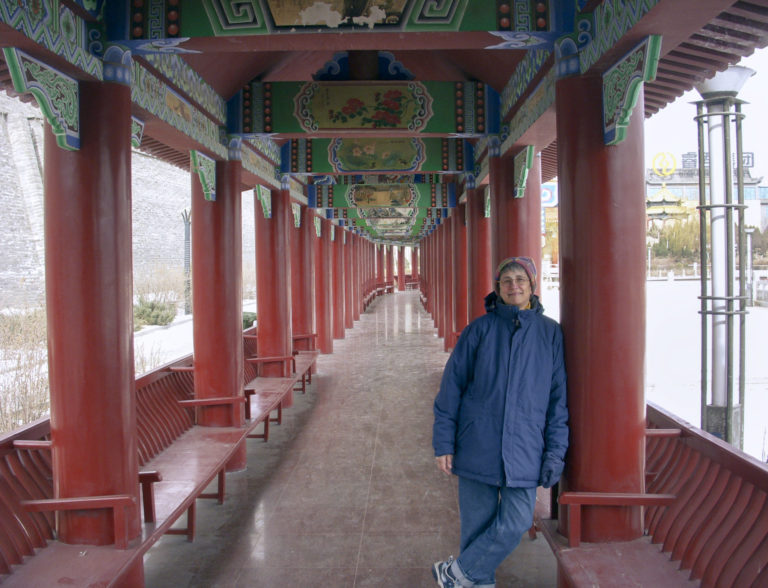
Picture taken by my son Jamie, who was my tour guide, host, and translator for the five weeks I spent in China – and who thus gave me the adventure of a lifetime.

Mary G
I’ve enjoyed this series so much. The street scenes in particular, though the temples and steep stairs are amazing too.
Wag
Love the photo of the sanctuary. Beautiful and vivid colors.
raven
Awesome!
Torrey
Really excellent series! Thank you!
arrieve
Love seeing this deep dive into a place I’ll probably never see — I’ve been to Beijing twice, but I was working and didn’t get to see any of the rest of China aside from a quick trip to Xian.
I especially love those stairs; unfortunately, although I am much more daring than I was in my youth when you would never have gotten me anywhere near a climb like that, my increase in courage has been accompanied by a marked decrease in the quality of my knees.
JanieM
Thanks everyone — it was fun putting these together and reminiscing as I went.
@arrieve: My knees are bad too, but luckily that shot shows all the steps we had to deal with. I have a picture somewhere of my son in real mountains somewhere in China, climbing steps along a cliff-edge with nothing but a chain like that between him and the abyss. I did that in the Grand Canyon when I was young — without even a chain! — but I don’t think you could get me to do it now for any inducement whatsoever.
JanieM
From WaterGirl, in the comments to Albatrossity’s August 1 post:
Cat photo comes later. :-)
Laura Too
This whole series has been a delight! Thank you.
susanna
Thanks for all these trip photos, they’ve been a treat. They also exemplify the saying re a picture worth a thousand words.
If you travel solo usually, would you share the ins and outs of it, along with recommendations? I’m going to be new at that when the planet recovers sufficiently.
dnfree
I have so enjoyed your photos, both for reminders of our trip in 2008, and for glimpses of a part of China that tourists don’t usually get to. Thank you for sharing, and for the photo of yourself!
JanieM
@susanna: Traveling solo — will come back to that topic a little later, though I’m not sure how much I can say.
YY_Sima Qian
@JanieM:
Wonderful series! My perspective is not that local, having never been to Yulin or even northern Shaanxi. :-)
As for Red Stone Gorge, the grottoes date to Song & Yuan Dynasties (~ 11th – 15th Centuries), & are created by Buddhist monks and hermits as places of worship & meditation. The “recesses” originally had wooden façades in the style of temple buildings to keep out the elements, but they were probably lost to time. The calligraphy carvings date to Ming Dynasty (15 – 17th Centuries), left by scholarly officials & military officers posted to the area, Yulin being a key stronghold on the Great Wall to defend against the raiding Mongol nomads to the north, & key trading post for commerce w/ the same.
(The above comes from Baidupedia.)
Buddhist Grottoes are found throughout northern & northwestern China, the most famous of which are the Mogao Grottoes at Dunhuang (Gansu Province, west of Shaanxi, dating to 4th – 8th Centuries), Yungang Grottoes at Datong (Shanxi Province, east of Shaanxi, 5th – 6th Centuries), Longmen Grottoes at Luoyang (Henan Province, southeast of Shaanxi, 6th – 7th Centuries) & Dazu Stone Carvings (Chongqing Municipality, south of Shaanxi, 7 – 12th Centuries). The artistic styles of of the sculptures, carvings & murals at these sites trace the history of the spread of Buddhism from northern India to China, through Central Asia along the Silk Road. Mogao Grottoes, being the earliest, show strong Indo-Iranian influences w/ traces of Hellenistic style left by the Greco-Bactrian Kingdom in modern day Afghanistan. Apsara carvings on the columns & ceilings of Yungang Grottoes would not be out of place in a Hindu temple. The sculptures at the Longmen Grottoes, however, are much more Sinitic. The sculptures at Dazu (and Red Stone Gorge) show a mature Sinitic style that had absorbed & incorporated some of the foreign influences. I have been to all four, but not Red Stone Gorge.
JanieM
@susanna: My travel has been mixed. My international travel has almost always been to places where I have friends I can stay with, so the travel itself is solo the actual stay isn’t, necessarily. I hitchhiked all over Ireland alone in 1979, but the next time I went I was told it wasn’t safe anymore since drugs had come into the country.
I do travel alone by car — driving trips between Maine and Ohio, other parts of NE, or into Canada. I stay at name-brand hotels…I don’t stop at rest areas after dark, but otherwise I don’t take a lot of precautions.
I’ve made two trips to London using this little guide, which has been invaluable and which I find far less daunting than the incredibly detailed ones like Lonely Planet. I wore a couple of the fold-out maps to shreds on my first trip and had to buy another copy of the book. It isn’t designed for solo travelers as such, but I’ve stayed at places they recommend and they were good choices for me.
I don’t know how old you are, but I’ve heard Road Scholar trips can be fun — not solo as such, obviously.
This might be a good topic for a thread sometime — sharing travel tips! (Or what’s a full-service blog for? ;-) )
JanieM
@YY_Sima Qian: Thanks as always!! That fills in a lot of blanks.
J R in WV
Great photos of a fascinating ancient resource! Have enjoyed the whole China series. Thanks for sharing.
Thanks YY_Sima Qian for the additional information, all your posts are so educational!
Maybe we will all be able to travel again some day…